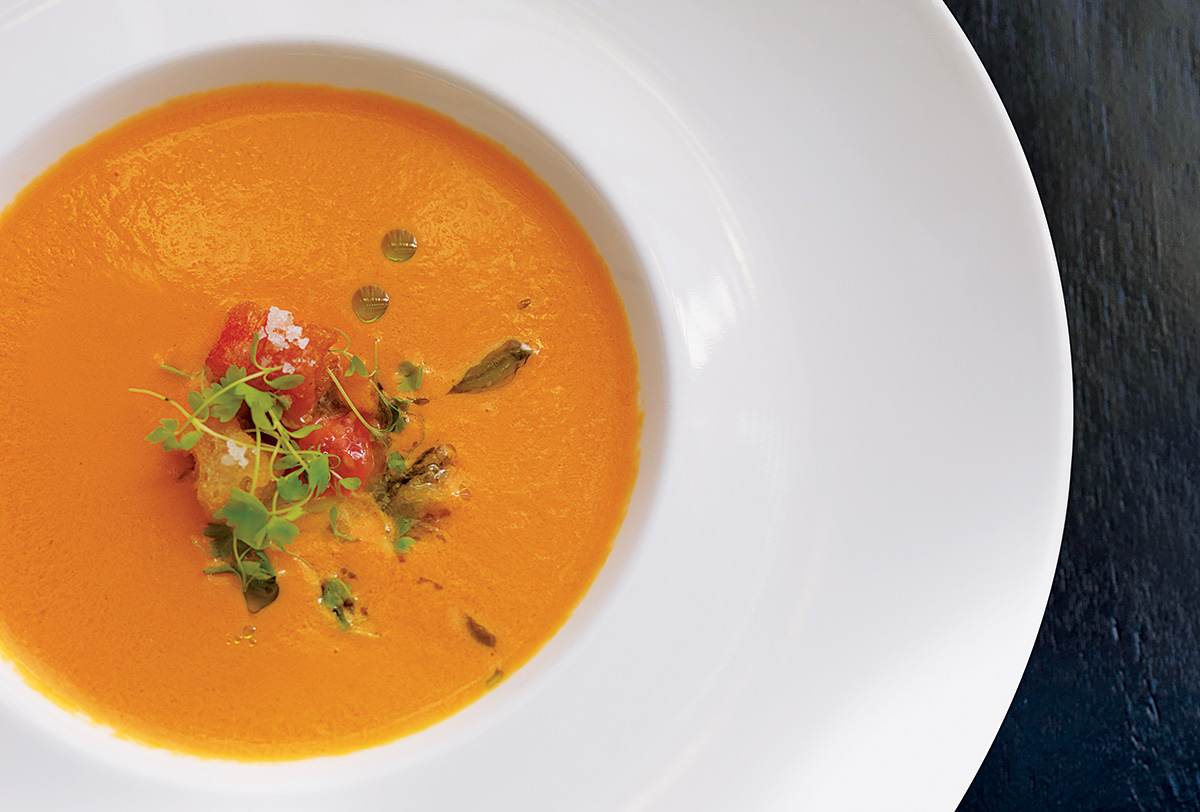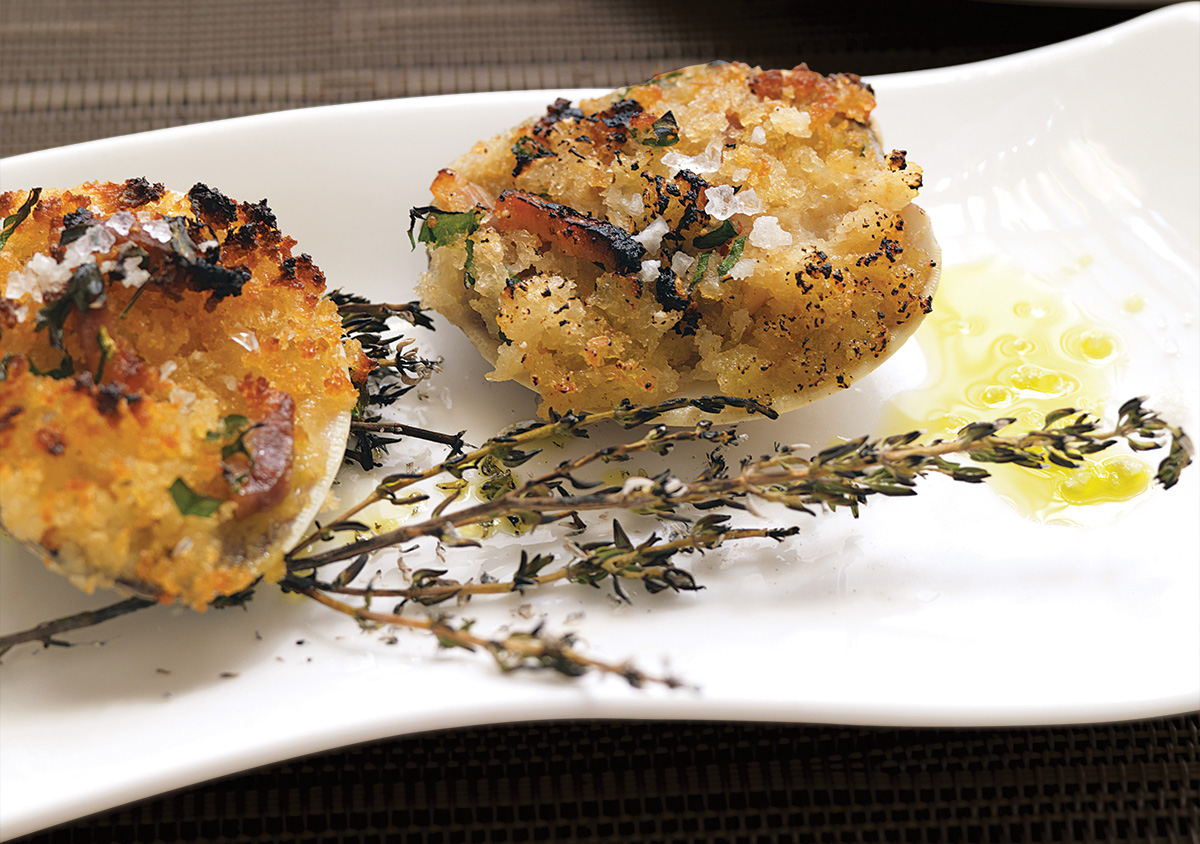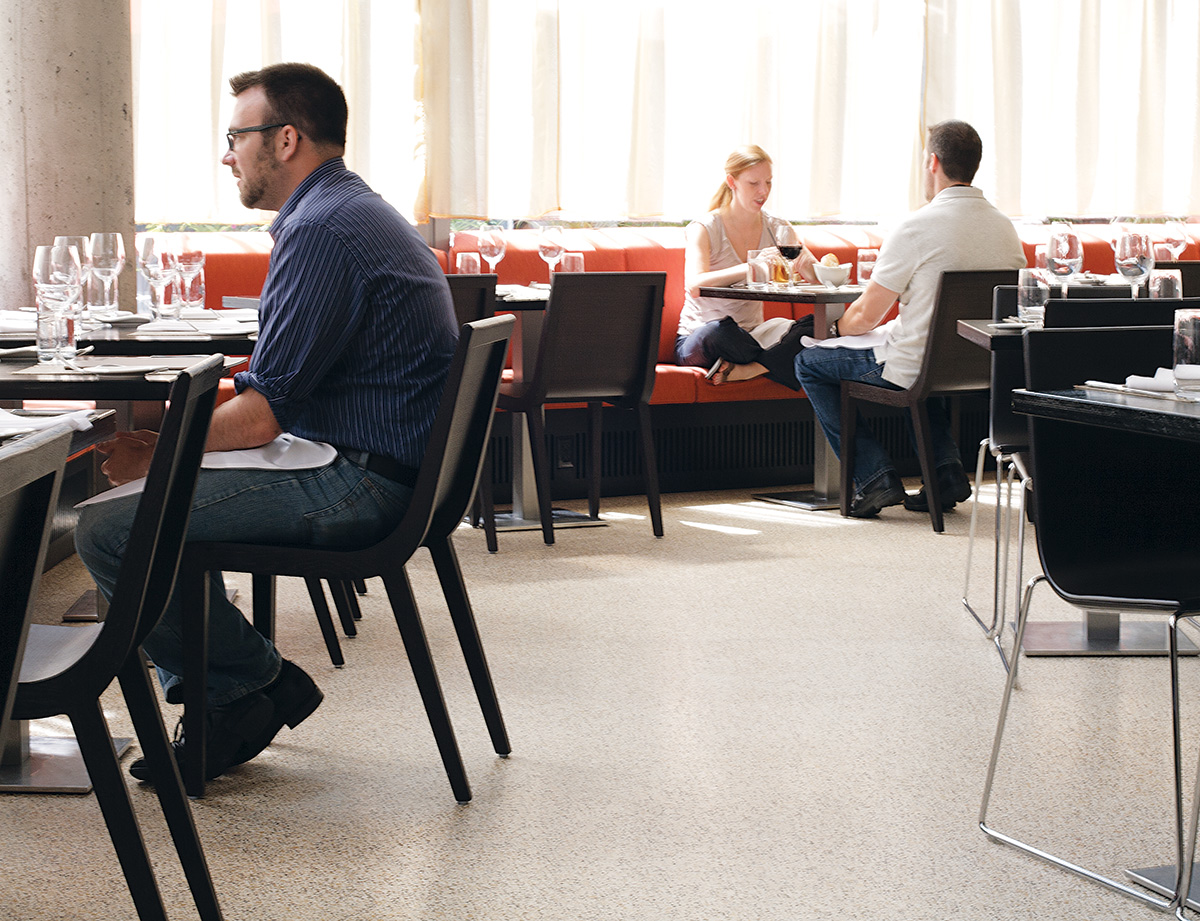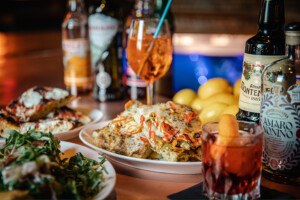Restaurant Review: Bina Osteria
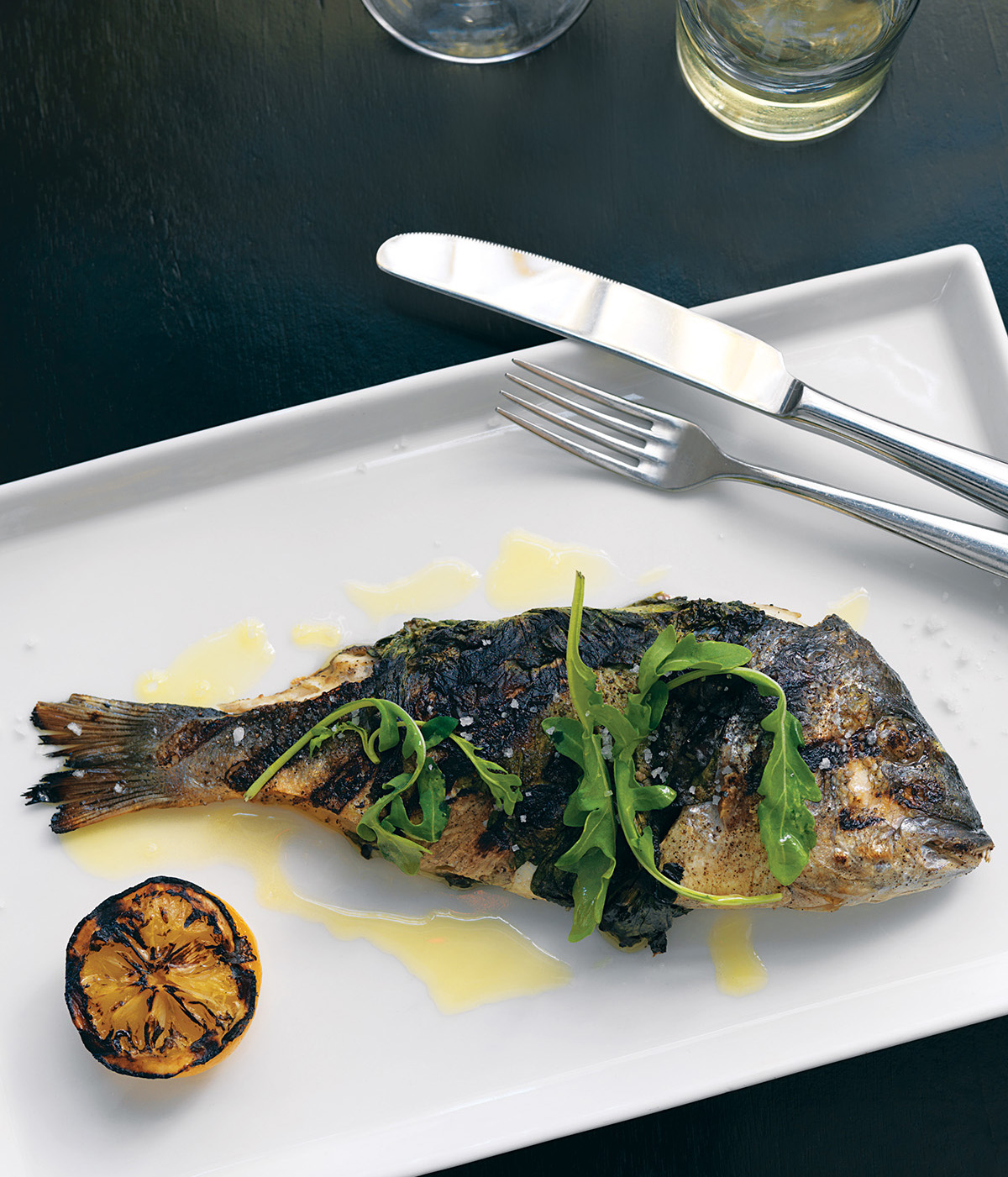
Photograph by Michael Piazza
Grilled whole orata with lemon and olive oil, $26
Bina Osteria is a very warm, essentially modest restaurant inside a very cool, futuristic space. Its starkly elegant architecture — soaring windows, dazzling planar trapezoidal ceiling panels, white metal lights that look like the arms of a giant industrial robot — implies something glossy and modernist. And when Bina opened in November 2008, at the intersection of Downtown Crossing and the Theater District, it showed plenty of forward-thinking ambition, especially in the form of Brian Konefal, a talented chef who wanted to put a modern stamp on the classic Italian cuisine the owners had intended. Konefal used too many foams and too much butter, but he was a striking original. I’d still travel far for his butter-infused potato gnocchi.
Then Konefal left after seven months in a high-profile, dead-of-night defection. His replacement, Bruno Guadagnin, kept a low profile, and Bina never recovered the crowds and the buzz it had initially attracted. That’s a shame, because with chef number three, Will Foden, who’s been at the stove since last November, Bina Osteria has finally become the place its owners — siblings Azita Bina-Seibel and Babak Bina — always believed it could be: a comfortable neighborhood spot for area office workers and the high-income residents of the Ritz-Carlton condos next door, and a place to go before or after the theater or a movie at the huge Loews cinema down the street.
The owners have long offered style, comfort, and professionalism in abundance at Lala Rokh and Bin 26, their other restaurants across the Common on Beacon Hill. They excel at fresh food with a Mediterranean simplicity that emphasizes the kind of quality ingredients the siblings grew up eating in their native Iran. My favorite is Lala Rokh, where the lovely, intimate interior is warm and sophisticated. It’s a perfect complement to the Persian food.
Bina’s setting, though, seems to clash with the pure-lined Italian menu, unless you are thinking of Milan. But the ingredients are fresh — an heirloom tomato soup that tasted like the essence of summer (pictured right); grilled whole orata so fresh you’d think you were at a seaside café in Italy or Greece.
At its best, Bina offers Italian food of an authenticity you can typically get only at Coppa, in the South End, or Il Casale, in Belmont. (Reminder: You won’t find it in the North End.) The tapas-size stuzzicare ($3 each) prove this, and at bargain rates: milky, sweet homemade ricotta with Sicilian eggplant caponata; a little cube of wild Maine bluefin tuna belly served with radish and salsa genovese; sweet peperonata stewed in oil and white balsamic vinegar. Chicken liver crostini were too silken for me (in Tuscany they’re lumpy and rustic) and didn’t taste enough of liver — but that will be a boon for the liver ambivalent, who will instead taste sage and rosemary in what could be a meaty butter.
The best of the stuzzicare was an unexpected star, given that it’s a red-sauce-joint workhorse: baked littlenecks with home-cured pancetta and buttery, lightly garlicky bread crumbs (pictured below). The clams were perfectly hot but not the least bit tough, and broiled so briefly that they still had plenty of juice to mix with the gritty, toasty crumbs. I’m not sure I’ve ever had better (and I’ve sure had worse, recently at Locke-Ober) — and two clams were just $3, my new nomination for the best deal in town.
As for the salads, they are remarkably bright, showing attention to detail that few restaurants bother with. The shaved asparagus salad ($14) features hand-shelled fava beans, mint, and grana Padano, which I prefer to Parmigiano-Reggiano for its sweeter flavor.
Distinct flavors and ingredients are found everywhere on the menu, like the yellow and red heirlooms in that tomato soup ($12), which was creamy with goat cheese sfumato. Grilled octopus with braised potatoes and celery ($15), a dish that should have evoked a Greek island, was mealy and salty, a flaw of many dishes. But zuppa di pesce ($16) was an expert reminder of an Italian Riviera port: a tomato base, concentrated and thick yet not heavy, freshened with halved cherry tomatoes and chunks of swordfish, calamari, and clams, with a smooth anchovy aioli on the bread to provide punch.
Primi plates were more of a mixed lot than they should have been. Spaghetti with tomato and basil ($16), a flagship dish, was disappointingly bland and salty, the homemade pasta as thin as angel hair. Malfatti, spinach and ricotta dumplings that are akin to unwrapped ravioli ($18), tasted liked uncooked batter. Ricotta gnocchi with a mildly meaty pig’s head ragu ($24; shown right), meanwhile, were so pillowy and full of potato flavor that I didn’t miss the gnocchi of the restaurant’s early days. And tagliarini with basil, tomato, house-cured olives, and bottarga, or salted roe ($24), was everything the spaghetti was not — an absolutely Italian preparation, with yielding but al dente pasta and an authoritatively fish-flavored sauce.
Aside from that grilled whole orata ($26) — imported sea bream wrapped in escarole with flaky but full-flavored white meat and black-crisped skin — the standouts among the secondi were the meat dishes. Best of all, surprisingly, was the grilled skirt steak ($26). A superior cut and a better take on London broil in Italian dressing, it’s marinated with smoked paprika, cut into tender, pink slices, and served with a red-pepper-and-onion salsa rossa and great deep-fried fingerling potato halves dusted with rosemary and salt. Cocoa-crusted veal brisket at dinner ($28) was nearly as good, the meat marvelously tender from being braised in milk for four hours, with tonnato sauce and a nondescript but fresh fregola salad. It makes you wish other places offered delicate, less-fatty veal brisket in place of beef.
Desserts were uneven, though they use the same high-quality ingredients. Homemade gelati and sorbetti (three scoops for $9) were wan, with the exception of a wonderfully nutty hazelnut; the semifreddo ($9) was too creamy and heavy, but had lots of good white chocolate and excellent local strawberries underneath, the flavor boosted by vin cotto. The nicest surprise was a berry crostata ($9) with a buttery double crust.
There are plenty of treats at Bina, but they’re on a menu that’s a little too long, in a space that’s a little too white. Still, they’re worth seeking out — especially in a neighborhood where easy, anytime, reasonably priced dining options are far too few.
Menu Highlights:
Bina Osteria, 581 Washington St., Boston, 617-956-0888, binaboston.com
Chilled heirloom tomato soup, $12
Baked littleneck clams with pancetta and bread crumbs, $3
Ricotta gnocchi with pig’s head ragu, $24
Plus: Tagliarini with olives and bottarga, $24 | Grilled skirt steak, $26 | Cocoa-crusted veal brisket, $28 | Berry crostata, $9
Critic Corby Kummer—an editor at the Atlantic and author of The Pleasures of Slow Food—has been reviewing Greater Boston’s top restaurants in our pages since 1997.
